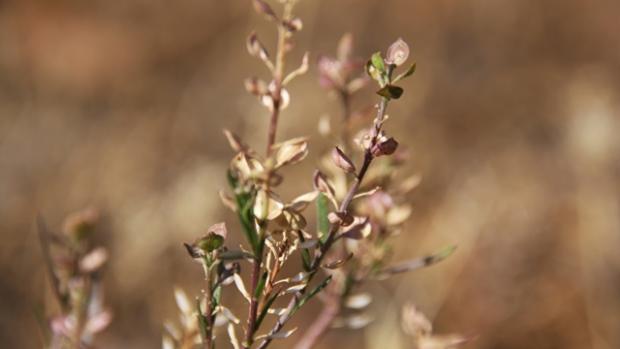Loading
Rare plant a welcome find in Gunbower

The discovery of three nationally important plant species in Gunbower Forest has sowed excitement on the eve of spring.
Ecologists working in areas of the forest that have received both healthy wetland flows and a natural flood in the past three years have found plant species not recorded in the area for at least 10 years.
“We found three new plant species that are of conservation significance,” North Central Catchment Management Authority Project Officer Kathryn Stanislawski said.
“We came across the nationally endangered winged peppercress, the rare Mallee annual bluebell and the little-known bundled peppercress. We have been surveying the forest for a decade, and have never recorded them in our monitoring sites before.
“We also found the highest number of rare or threatened understory species in the box woodland communities, and in the river red gum area, since 2012.
“These are small plants, but they are delivering a big, loud message.”
That message, Ms Stanislawski said, is that the flows are making a big difference.
“Since we built the Hipwell Road regulator and channel in 2014, water has flowed into sections of the forest that were really in dire straits,” she said.
“The forest was so stressed from the Millenimum Drought that the big floods between 2010 and 2012 weren’t enough to bring the trees back to full health. Supplementing the natural floods with managed flooding has put the areas inundated by the Hipwell Regulator on the road to recovery.
“Two managed flows in 2014 and 2015 gave Mother Nature a kick start, with last year’s floods taking full advantage, helping the area come alive.
“These new plants are proof of that, and now they have set seed, they will be here for a long time to come.
“Our watering plans build on and aim to increase the benefits of natural flood, which is the basis for everything we do.
“Before river regulation, large floods used to inundate this area about 7 years in every 10. Now it is less than 4 years in every 10, and they don’t last as long. On top of this, there are very few smaller floods. That’s where we come in.”
The watering program will continue in the coming weeks, with the top up of the forest’s permanent wetlands.
“The forest floodplain has had a good drink over the past few years, so we are preparing to deliver water to Reedy Lagoon and Black Swamp only,” Ms Stanislawski said.
“We will use the smaller regulators off Gunbower Creek and deliver about 4GL. Spring is when these lagoons received water from the river before European settlement.
“They will provide an important source of water for birds, frogs, turtles and other animals over summer.”
Importantly, the flow will begin before the weather, and the water, gets too hot, and before carp start to move.
“We anticipate a diverse array of wetland plants will respond to this flow and they will set seed, making sure we have a healthy wetland into the future,” Ms Stanislawski said.
The monitoring was part of The Living Murray program, a joint initiative funded by the New South Wales, Victorian, South Australian, Australian Capital Territory and Commonwealth governments, coordinated by the Murray-Darling Basin Authority.
The environmental water will be delivered by the North Central CMA in line with the Victorian Environmental Water Holder Seasonal Watering Plan 2017-18.
